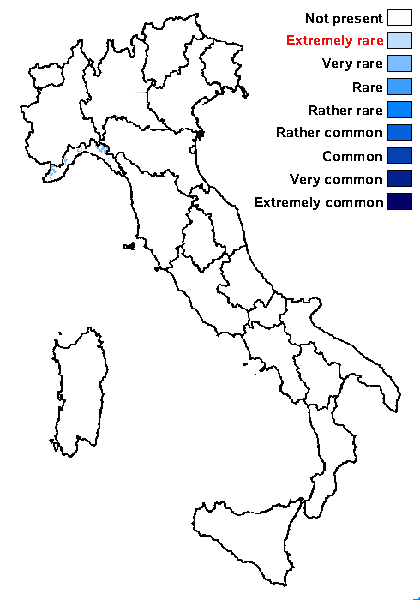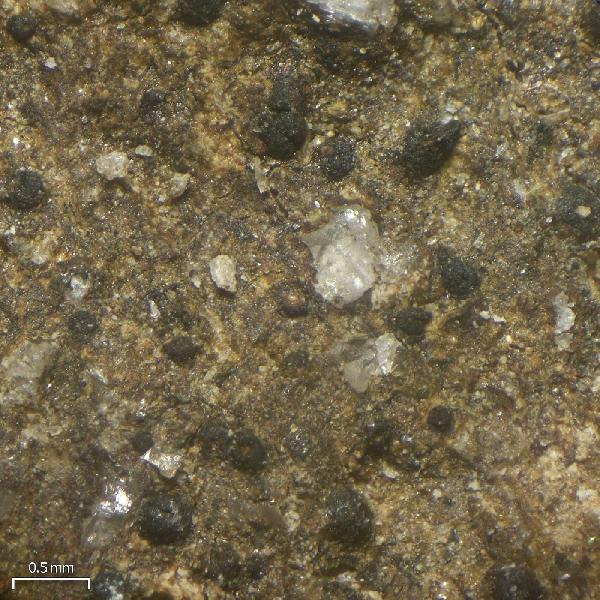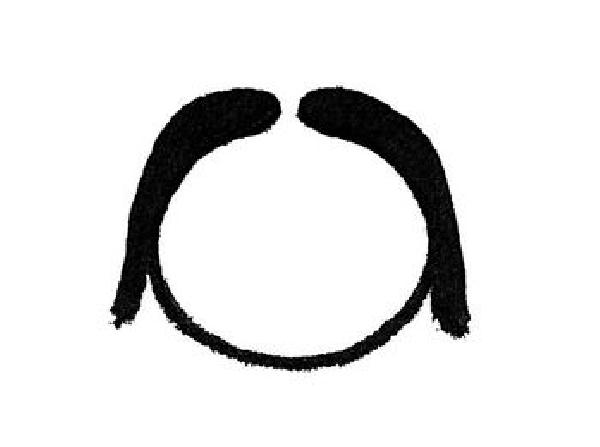Verrucaria inornata Servít
Stud. Bot. Cech., 11: 114, 1950.
Synonyms:
Distribution: N - Lig.
Description: Thallus crustose, thinly episubstratic, dull olive-brown to dark brown, subgelatinous when wet, often with a fimbriate prothallus, consisting of scattered to contiguous, small, subgranular flecks spreading in irregular patches. Cortex not developed, the thallus subparaplectenchymatous throughout, with interspersed substrate granules. Perithecia black, hemispherically projecting, 0.25-0.3 mm across. Involucrellum black, extending to base-level, adpressed to exciple except near the base where it is separated by a thin, colourless line, 25-30 µm thick laterally, c. 40 µm thick in apical part; exciple subglobose, 0.2-0.25 mm across, the wall colourless, 15-20 µm thick; hamathecium of simple, 15-25 µm long periphyses and periphysoids, interascal filaments absent; hymenial gel hemiamyloid, I+ red (I+ blue at very low concentrations of I), K/I+ blue. Asci 8-spored, clavate, I-, fissitunicate, the wall thickened above, with an ocular chamber, dehiscent by extrusion of an endotunica to form a delicate rostrum, Verrucaria-type. Ascospores 1-celled, hyaline, ellipsoid, 23-27(-30) x 9-12.5 µm. Photobiont chlorococcoid. Spot tests: K-, C-, KC-, P-, UV-. Chemistry: without lichen substances.Note: on rather shaded and moist surfaces of calciferous rocks, this species is similar to V. memnonia, differing in the larger spores and the pale excipulum. For a recent description see Breuss (2004).
Growth form: Crustose
Substrata: rocks
Photobiont: green algae other than Trentepohlia
Reproductive strategy: mainly sexual
Poorly known taxon in need of further study
Commonnes-rarity: (info)
Alpine belt: absent
Subalpine belt: absent
Oromediterranean belt: absent
Montane belt: very rare
Submediterranean belt: absent
Padanian area: absent
Humid submediterranean belt: absent
Humid mediterranean belt: absent
Dry mediterranean belt: absent

Predictive model
Growth form: Crustose
Substrata: rocks
Photobiont: green algae other than Trentepohlia
Reproductive strategy: mainly sexual
Poorly known taxon in need of further study
Commonnes-rarity: (info)
Alpine belt: absent
Subalpine belt: absent
Oromediterranean belt: absent
Montane belt: very rare
Submediterranean belt: absent
Padanian area: absent
Humid submediterranean belt: absent
Humid mediterranean belt: absent
Dry mediterranean belt: absent

Predictive model
 Index Fungorum
Index Fungorum
 GBIF
GBIF



